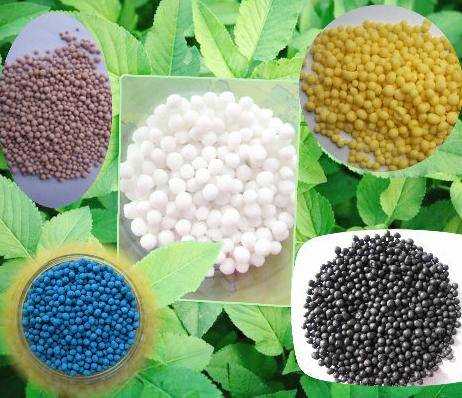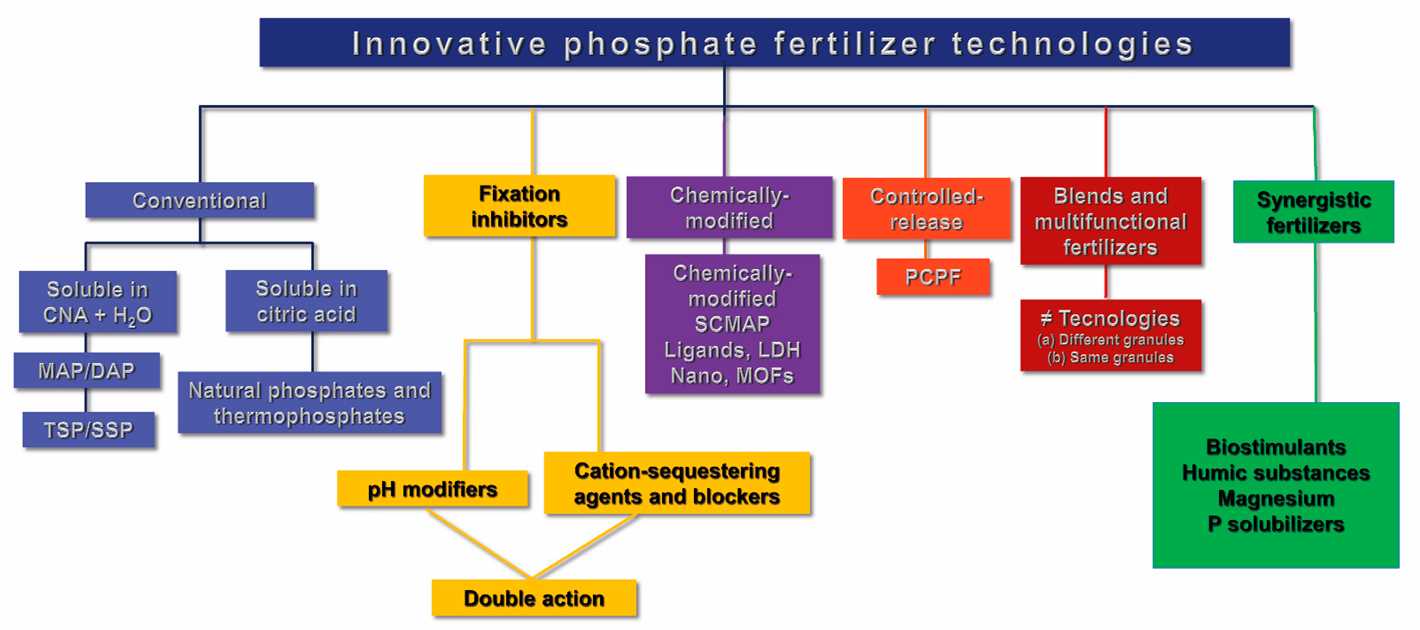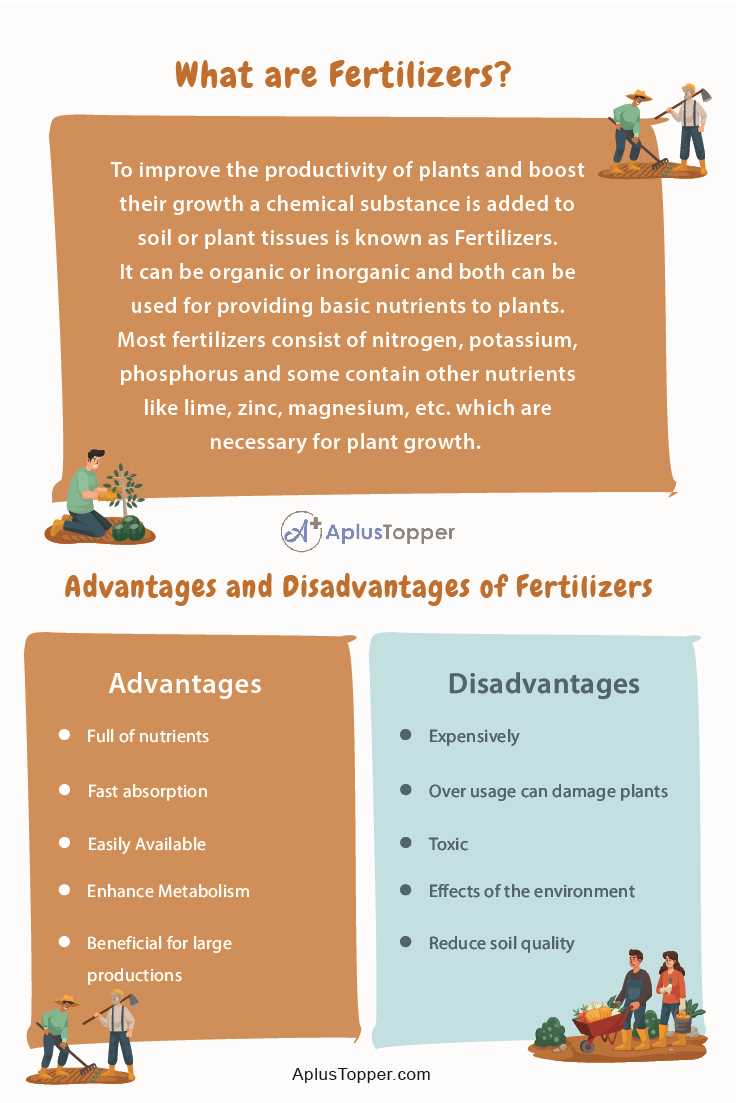- Nitroammophoska Fertilizer: Advantages and Disadvantages
- Advantages:
- Disadvantages:
- Ammophos Fertilizer: Benefits and Drawbacks
- Benefits
- Drawbacks
- Nitroammophoska vs Ammophos: Nutrient Content Comparison
- Nutrient Content of Nitroammophoska:
- Nutrient Content of Ammophos:
- Nitroammophoska vs Ammophos: Application Methods
- Top Dressing
- Side Dressing
- Foliar Spraying
- Fertigation
- Conclusion
- Nitroammophoska vs Ammophos: Cost Analysis
- 1. Price per bag
- 2. Cost-effectiveness
- 3. Application rates
- Conclusion
- Nitroammophoska vs Ammophos: Environmental Impact
- 1. Nitroammophoska
- 2. Ammophos
- Conclusion
- Nitroammophoska Fertilizer: Best Use Cases
- 1. Balanced Nutrient Composition
- 2. Versatile Application
- 3. Slow Release of Nutrients
- 4. Improved Root Development
- 5. Enhanced Flowering and Fruit Formation
- 6. Suitable for Different Soil Types
- 7. Cost-effective Option
- 8. Easy Application
- 9. Long Shelf Life
- Ammophos Fertilizer: Recommended Applications
- Questions and Answers:
- What are the main differences between Nitroammophoska and Ammophos fertilizers?
- Which fertilizer is more suitable for plants with a high need for phosphorus?
- Are both Nitroammophoska and Ammophos fertilizers easy to apply?
- Which fertilizer provides a more balanced nutrient composition?
- What are the advantages of using Nitroammophoska fertilizer?
- What are the disadvantages of using Ammophos fertilizer?
- Which fertilizer is more cost-effective?
- Videos: Top 6 Worst and 6 Best Garden Fertilizers
Nitroammophoska and Ammophos are two popular types of fertilizers that are widely used in agriculture. Both fertilizers provide essential nutrients for plants, but they have some differences in composition and application.
Nitroammophoska, also known as NPK fertilizer, contains nitrogen (N), phosphorus (P), and potassium (K). This balanced composition makes it suitable for various crops and helps promote healthy growth and development. Nitrogen is essential for leaf and stem growth, phosphorus is important for root development and flowering, and potassium helps improve overall plant health and resistance to diseases.
Ammophos, on the other hand, is a concentrated fertilizer that contains only phosphorus and ammonium. It is often used as a starter fertilizer, which is applied during planting to provide an immediate nutrient supply to young plants. Phosphorus is especially important for establishing strong root systems and promoting early growth. However, unlike Nitroammophoska, Ammophos does not contain potassium, which may limit its effectiveness in supporting long-term plant health.
When comparing the pros and cons of Nitroammophoska and Ammophos, it is important to consider the specific needs of your crops and the stages of their growth. Nitroammophoska offers a balanced nutrient composition and can be used throughout the growing season to support overall plant health. Ammophos, on the other hand, is more suitable for providing a quick boost of phosphorus to young plants.
In conclusion, both Nitroammophoska and Ammophos have their advantages and limitations. Understanding their composition and application can help farmers make informed decisions about which fertilizer to use based on their specific needs and crop requirements.
Nitroammophoska Fertilizer: Advantages and Disadvantages
Advantages:
- Well-balanced nutrient composition: Nitroammophoska fertilizer contains a balanced combination of nitrogen, phosphorus, and potassium, which are essential for plant growth and development.
- Improved nutrient availability: The nutrients in nitroammophoska fertilizer are easily absorbed by plants, ensuring efficient uptake and utilization.
- Long-lasting effects: Nitroammophoska fertilizer releases nutrients slowly over time, providing a sustained supply of nutrition to plants.
- Enhanced plant growth and productivity: The balanced nutrient composition of nitroammophoska fertilizer promotes healthy root development, improved plant vigor, and increased yields.
- Convenient application: Nitroammophoska fertilizer can be applied using various methods, such as broadcasting, side-dressing, or seed treatment, making it suitable for different crop types and cultivation practices.
Disadvantages:
- Environmental impact: The excessive use of nitroammophoska fertilizer can contribute to water pollution and eutrophication if not managed properly.
- Potential nutrient imbalances: Despite its balanced composition, long-term and excessive use of nitroammophoska fertilizer can lead to nutrient imbalances in soil, affecting nutrient availability and plant health.
- Cost: Nitroammophoska fertilizer can be more expensive compared to other fertilizers, which may pose a financial burden for some farmers.
- Storage and handling: Nitroammophoska fertilizer contains chemicals that can be hazardous if not stored and handled properly. Proper safety precautions should be taken during storage and application.
In conclusion, while nitroammophoska fertilizer offers several advantages in terms of its well-balanced nutrient composition, improved nutrient availability, long-lasting effects, enhanced plant growth, and convenient application methods, it is important to consider and address the potential disadvantages such as its environmental impact, potential nutrient imbalances, cost, and the need for proper storage and handling practices.
Ammophos Fertilizer: Benefits and Drawbacks
Benefits
- High Phosphorus Content: Ammophos fertilizer has a high phosphorus content, typically around 52%, which makes it an excellent choice for plants that require a boost of phosphorus for healthy growth.
- Efficient Nutrient Delivery: The high solubility of ammophos allows for rapid nutrient uptake by plants, ensuring immediate access to phosphorus for improved root development and overall plant vigor.
- Enhanced Flowering and Fruit Set: Ammophos fertilizer has been found to promote more prolific flowering and fruit set in various fruit-bearing and flowering plants, leading to higher yields and better-quality produce.
- Long-Term Effectiveness: The slow-release properties of ammophos make it effective over an extended period, providing a sustained supply of phosphorus to plants and reducing the need for frequent reapplication.
- Compatibility with Other Fertilizers: Ammophos can be easily combined with other fertilizers, allowing for customized nutrient formulations tailored to the specific needs of different plants and soil conditions.
Drawbacks
- High Cost: Compared to other fertilizers, ammophos can be relatively expensive, which may limit its affordability for some farmers and gardeners.
- Acidifying Effect on Soil: Ammophos has an acidifying effect on soil pH, potentially leading to imbalances in soil acidity levels over time if not properly managed.
- Environmental Considerations: The high phosphorus content of ammophos can contribute to nutrient runoff in water bodies if not applied in controlled amounts, potentially causing water pollution and eutrophication.
In conclusion, while ammophos fertilizer offers several benefits such as high phosphorus content, efficient nutrient delivery, enhanced flowering and fruit set, and long-term effectiveness, it also has drawbacks such as high cost, the potential acidifying effect on soil, and environmental considerations. When using ammophos, it is important to consider these factors and utilize it responsibly to maximize its benefits while minimizing its drawbacks.
Nitroammophoska vs Ammophos: Nutrient Content Comparison
When it comes to choosing the right fertilizer for your plants, it is important to consider the nutrient content of different options. Two popular choices for fertilizers are Nitroammophoska and Ammophos. Let’s compare the nutrient content of these two fertilizers to help you make an informed decision:
Nutrient Content of Nitroammophoska:
- Nitrogen (N): 10%
- Phosphorus (P): 20%
- Potassium (K): 10%
- Sulfur (S): 6%
- Magnesium (Mg): 1%
Nutrient Content of Ammophos:
- Nitrogen (N): 12%
- Phosphorus (P): 52%
- Potassium (K): 0%
- Sulfur (S): 0%
- Magnesium (Mg): 0%
Pros of Nitroammophoska:
- Contains a good balance of nitrogen, phosphorus, and potassium, essential for plant growth
- Includes sulfur and magnesium, which are important secondary macronutrients
- Provides nutrients for both vegetative growth and flowering
Cons of Nitroammophoska:
- Lower phosphorus content compared to Ammophos
Pros of Ammophos:
- High phosphorus content, ideal for promoting root development and flower formation
Cons of Ammophos:
- No potassium, sulfur, or magnesium, which may limit overall nutrient availability
In summary, Nitroammophoska offers a balanced nutrient profile with additional secondary macronutrients, making it suitable for various plant growth stages. On the other hand, Ammophos is rich in phosphorus, making it an excellent choice for root development and flower formation, but lacks other essential nutrients. Consider the specific needs of your plants and their growth stage before choosing between Nitroammophoska and Ammophos.
Nitroammophoska vs Ammophos: Application Methods
When it comes to applying fertilizers, there are several methods available for both Nitroammophoska and Ammophos. The choice of application method depends on various factors, including the type of crop, soil conditions, and the desired results.
Top Dressing
Top dressing is a common method of applying fertilizers to the soil surface around the plants. It involves spreading the granular fertilizer evenly over the soil. Both Nitroammophoska and Ammophos can be applied using this method. However, it is important to ensure that the fertilizer is spread evenly and not concentrated in one area to avoid burning the roots of the plants.
Side Dressing
Side dressing is another method of applying fertilizers, especially for row crops such as corn and vegetables. In this method, a furrow is created alongside the plant row, and the fertilizer is placed in the furrow before being covered with soil. Nitroammophoska and Ammophos can be side dressed by placing the granules in the furrow at a distance from the plant and then covering them with soil. This method allows for targeted application of fertilizers to the roots of the plants.
Foliar Spraying

In addition to soil application, both Nitroammophoska and Ammophos can also be applied as foliar sprays. Foliar spraying involves applying the fertilizer directly to the leaves of the plants as a liquid solution. This method allows for quick nutrient absorption by the plants and is particularly useful during periods of nutrient deficiency or stress. However, it is important to follow the recommended dilution rates and application frequencies to avoid leaf burn or phytotoxicity.
Fertigation
Fertigation is a method of applying fertilizers through irrigation systems. It involves mixing the fertilizer with water and delivering it directly to the crop’s root zone through drip irrigation or sprinkler systems. Both Nitroammophoska and Ammophos can be fertigated, providing a precise and efficient way of delivering nutrients to the plants. Fertigation allows for controlled nutrient application and ensures optimal uptake by the crop.
Conclusion

Both Nitroammophoska and Ammophos can be applied using various methods, including top dressing, side dressing, foliar spraying, and fertigation. The choice of application method depends on the specific requirements of the crop and the desired results. It is important to follow the recommended rates and guidelines for each method to ensure proper nutrient delivery and avoid any negative effects on the plants.
Nitroammophoska vs Ammophos: Cost Analysis
1. Price per bag

Nitroammophoska and Ammophos are both popular fertilizers used in agriculture. When comparing their costs, one important factor to consider is the price per bag.
- Nitroammophoska: The price per bag of Nitroammophoska may vary depending on the brand and supplier. On average, it ranges from $30 to $40 per bag.
- Ammophos: The price per bag of Ammophos is slightly lower compared to Nitroammophoska. It usually ranges from $25 to $35 per bag.
2. Cost-effectiveness
While Ammophos is generally cheaper than Nitroammophoska, the cost-effectiveness of each fertilizer should also be taken into consideration. The nutrient content and composition of the fertilizers can influence their effectiveness in promoting plant growth and yield.
- Nitroammophoska: Nitroammophoska is a complex fertilizer that provides a balanced mix of nitrogen, phosphorus, and potassium. Its nutrient composition is designed to meet the needs of various crops and soils. Its effectiveness in promoting plant growth and yield can contribute to its overall cost-effectiveness.
- Ammophos: Ammophos is a concentrated phosphorus fertilizer. While it may have a lower price per bag, its nutrient composition may be less versatile compared to Nitroammophoska. It is primarily used to address phosphorus deficiencies in soils. Its cost-effectiveness may depend on the specific needs of the crops and the soil conditions.
3. Application rates
The application rates of the fertilizers can also impact their cost analysis. Higher application rates may require more bags, leading to increased costs.
- Nitroammophoska: The recommended application rates for Nitroammophoska may vary depending on the type of crop and soil conditions. However, its balanced nutrient composition allows for efficient usage, potentially reducing the required application rate.
- Ammophos: Ammophos typically requires a lower application rate compared to Nitroammophoska, as it is specifically designed to address phosphorus deficiencies. This can contribute to lower overall costs, despite the slightly higher price per bag.
Conclusion
When comparing the cost of Nitroammophoska and Ammophos, it is important to consider the price per bag, cost-effectiveness, and application rates. While Ammophos may have a lower price per bag, the balanced nutrient composition of Nitroammophoska can contribute to its cost-effectiveness. Additionally, the application rates may vary, affecting the overall cost of the fertilizers. It is advisable to assess the specific needs of crops and soil conditions before making a decision on which fertilizer to use.
Nitroammophoska vs Ammophos: Environmental Impact
1. Nitroammophoska
- Nitroammophoska is a complex fertilizer containing nitrogen, phosphorus, and potassium.
- It is considered a balanced fertilizer, providing nutrients in a ratio suitable for various crops.
- One of the main environmental concerns associated with Nitroammophoska is the potential for nitrogen leaching. If not properly managed, nitrate leaching can contaminate groundwater and surface water, leading to water pollution.
- Another environmental impact of Nitroammophoska is the release of greenhouse gases during its production. The manufacturing process involves the use of energy, which can contribute to carbon emissions and climate change.
- However, when used properly and in recommended quantities, Nitroammophoska can be an effective and efficient fertilizer with relatively minimal environmental impact.
2. Ammophos
- Ammophos is a phosphate-based fertilizer commonly used in agriculture.
- Unlike Nitroammophoska, Ammophos does not contain nitrogen or potassium, focusing solely on delivering phosphorus to plants.
- One of the main environmental concerns associated with Ammophos is the potential for phosphorus runoff. When excessive amounts of phosphorus are applied to the soil, rainwater can carry it into nearby water bodies, causing eutrophication and harmful algal blooms.
- Similarly to Nitroammophoska, the production of Ammophos also contributes to greenhouse gas emissions and climate change, as energy is required for its manufacture.
- Proper application techniques and timing can help minimize the environmental impact of Ammophos, ensuring that it is used in a way that maximizes its benefits while minimizing unintended environmental consequences.
Conclusion
Both Nitroammophoska and Ammophos fertilizers have their own environmental impacts. Nitroammophoska can potentially contribute to nitrogen leaching and greenhouse gas emissions, while Ammophos can lead to phosphorus runoff and contribute to climate change. However, when used responsibly and in accordance with best practices, these fertilizers can be effective tools in crop production with relatively minimal environmental impact.
Nitroammophoska Fertilizer: Best Use Cases
1. Balanced Nutrient Composition
Nitroammophoska is a compound fertilizer that contains a balanced ratio of three essential nutrients – nitrogen (N), phosphorus (P), and potassium (K). This balanced composition makes it suitable for various crops and ensures their optimal growth and development.
2. Versatile Application
Nitroammophoska fertilizer can be applied to a wide range of crops, including vegetables, fruits, cereals, and ornamental plants. Its versatility makes it a popular choice among farmers and gardeners.
3. Slow Release of Nutrients
One of the advantages of nitroammophoska fertilizer is its slow-release formula. This means that the nutrients are gradually released over time, providing a sustained supply to the plants. It helps prevent nutrient leaching and ensures efficient nutrient uptake by the crops.
4. Improved Root Development

The balanced nutrient composition of nitroammophoska fertilizer promotes root development in plants. The phosphorus and potassium content stimulate root growth, enabling the plants to absorb water and nutrients more effectively.
5. Enhanced Flowering and Fruit Formation
Nitroammophoska fertilizer contains phosphorus and potassium, which are essential for flowering and fruit formation. Regular application of this fertilizer can result in improved flower quality, increased fruit yields, and better overall crop productivity.
6. Suitable for Different Soil Types
Nitroammophoska fertilizer is suitable for various soil types, including sandy soils and soils with low organic matter content. Its balanced nutrient composition helps replenish the soil with essential elements, promoting healthy plant growth even in less fertile soils.
7. Cost-effective Option
Compared to other fertilizers, nitroammophoska is often considered a cost-effective option. Its balanced composition eliminates the need to purchase and apply multiple fertilizers, reducing overall fertilizer expenses.
8. Easy Application
Nitroammophoska fertilizer is easy to apply using traditional spreading or broadcasting methods. It can also be applied through irrigation systems, allowing for efficient and uniform nutrient distribution.
9. Long Shelf Life
Nitroammophoska fertilizer has a long shelf life, making it convenient for storage. Its stability ensures that the nutrient content remains intact until it is applied to the crops, even if stored for extended periods.
Note: While nitroammophoska fertilizer offers numerous benefits, it is important to consider the specific needs of your crops and consult the recommended application rates for optimal results.
Ammophos Fertilizer: Recommended Applications
Ammophos fertilizer is a type of phosphate-based fertilizer that is widely used in agriculture. It is known for its high content of phosphorus, which is an essential nutrient for plant growth and development. Ammophos can be used for various crops and in different stages of plant growth. Here are some recommended applications of Ammophos fertilizer:
- Seedling stage: Ammophos can be applied during the seedling stage to promote root development and improve overall plant vigor. It is recommended to mix the fertilizer with the soil before planting the seeds or transplanting seedlings. This will ensure that the phosphorus is readily available to the young plants.
- Vegetative stage: During the vegetative stage, plants require a steady supply of nutrients for leaf and stem development. Ammophos can be applied as a top dressing or incorporated into the soil around the base of the plants. This will provide a slow-release source of phosphorus, which can support healthy foliage growth.
- Flowering and fruiting stage: Phosphorus is crucial for flower and fruit formation. Ammophos can be applied during this stage to enhance the development of flowers and fruits. It can be applied as a foliar spray or through fertigation, depending on the specific crop and cultivation practices.
It is important to follow the recommended application rates and timings provided by the manufacturer and agricultural experts. Overapplication of Ammophos fertilizer can lead to nutrient imbalances and environmental issues.
Advantages of using Ammophos fertilizer:
- High phosphorus content: Ammophos has a high concentration of phosphorus, which makes it an excellent option for crops that require an extra boost of this nutrient.
- Quick availability: The phosphorus in Ammophos is readily available to plants, ensuring fast and efficient nutrient uptake.
- Improved yield and quality: Regular application of Ammophos can result in increased crop yields and improved quality of produce, such as larger and more vibrant fruits.
- Easy to handle: Ammophos is available in granular form, making it easy to handle and apply. It can be spread evenly over the soil surface or incorporated into the soil.
Overall, Ammophos fertilizer is a valuable tool for farmers and gardeners looking to enhance plant growth and productivity. It is important to consider the specific nutrient requirements of the crops and adjust the application rates accordingly.
Questions and Answers:
What are the main differences between Nitroammophoska and Ammophos fertilizers?
Nitroammophoska and Ammophos fertilizers are both types of chemical fertilizers commonly used in agriculture. However, there are some main differences between them. Nitroammophoska is a complex fertilizer that contains nitrogen, phosphorus, and potassium in balanced proportions. It is known for its high nutrient content and efficient absorption by plants. Ammophos, on the other hand, is a phosphorus-based fertilizer that contains only phosphorus and nitrogen. It is often used when plants require a higher dose of phosphorus.
Which fertilizer is more suitable for plants with a high need for phosphorus?
If plants have a high need for phosphorus, Ammophos fertilizer is more suitable. Ammophos is a phosphorus-based fertilizer that contains a higher concentration of phosphorus compared to Nitroammophoska. Phosphorus is an essential nutrient for plant growth and plays a vital role in processes such as root development, energy transfer, and flowering. Applying Ammophos can provide plants with a sufficient amount of phosphorus to support their growth and development.
Are both Nitroammophoska and Ammophos fertilizers easy to apply?
Yes, both Nitroammophoska and Ammophos fertilizers are easy to apply. They are usually available in granular form, which makes them easy to spread. Farmers and gardeners can simply scatter the granules on the soil surface, and the nutrients will gradually be released as water dissolves the granules. However, it is important to follow the manufacturer’s instructions regarding the application rates to avoid over-fertilization or nutrient imbalances.
Which fertilizer provides a more balanced nutrient composition?
Nitroammophoska provides a more balanced nutrient composition compared to Ammophos. Nitroammophoska contains nitrogen, phosphorus, and potassium in balanced proportions, which are essential macronutrients for plant growth. This balanced composition ensures that plants receive all the necessary nutrients in the right proportion, promoting healthy growth and development. Ammophos, on the other hand, contains only phosphorus and nitrogen, which may not provide a complete range of nutrients for optimal plant growth.
What are the advantages of using Nitroammophoska fertilizer?
Nitroammophoska fertilizer has several advantages. First, it provides a balanced nutrient composition, containing nitrogen, phosphorus, and potassium in optimal proportions. This helps promote healthy plant growth and development. Second, Nitroammophoska has a high nutrient content, which means that a smaller amount of fertilizer is required to achieve the desired nutrient levels. Finally, Nitroammophoska is known for its efficient absorption by plants, ensuring that nutrients are readily available to support plant growth.
What are the disadvantages of using Ammophos fertilizer?
While Ammophos fertilizer has its benefits, it also has some disadvantages. One disadvantage is that Ammophos contains a lower nutrient content compared to Nitroammophoska. This means that a larger amount of fertilizer is needed to achieve the desired nutrient levels, which can be more costly and time-consuming. Additionally, Ammophos may not provide a complete range of nutrients for optimal plant growth, as it only contains phosphorus and nitrogen.
Which fertilizer is more cost-effective?
In terms of cost-effectiveness, Nitroammophoska fertilizer is generally more cost-effective compared to Ammophos. Nitroammophoska has a higher nutrient content, which means that a smaller amount of fertilizer is needed to achieve the desired results. This can result in cost savings for farmers and gardeners. However, the specific cost may vary depending on various factors such as the brand, location, and quantity purchased.







